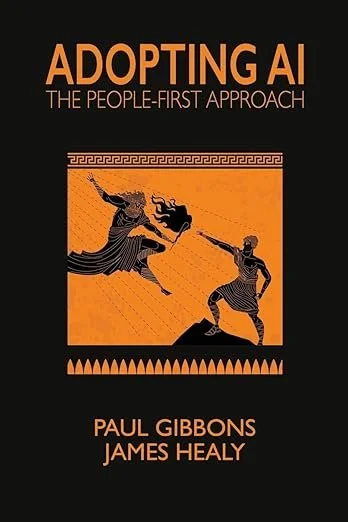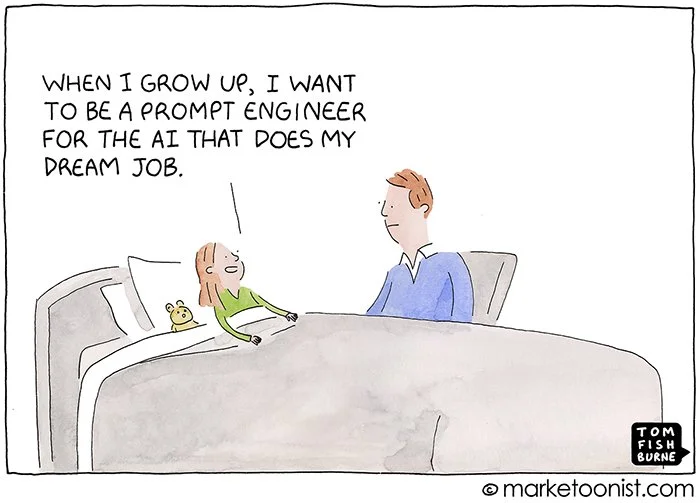When I was first given the opportunity to lead a team, I recollect a more seasoned leader saying “I love everything about being a leader, except the part about dealing with my people”
He was airing a classic stereotype – but one we all can empathize with.
People are agonizingly emotional, irrational, difficult and often hard to lead and manage.
They – WE - are also wonderfully passionate, ambitious, creative and have boundless energy when you can inspire and motivate them.
Truly great leaders have built incredibly successful organizations when they’ve been able to deftly harness all that humanity – good and questionable – toward a common, shared goal. In short, that dimension called culture.
Organizations like Starbucks, Four Seasons, Patagonia, Southwest Airlines regularly acknowledge the hard, relentless, unflinching, long and difficult work required to inspire, motivate, harness and channel the collective brilliance of their humans toward being a worldclass operation.
And it is hard, relentless, unflinching, long and difficult work.
But, if my newsfeed is anything to go by, it seems that doing that work seems less and less vital for many leaders today.
In one of the most sobering, but not surprising, pieces I read recently in Business Insider, many organizations – certainly in North America – seem to be adopting a more cavalier attitude to their humans.
A thinly veiled “Shape up or Ship Out” posture that is both stark and unambiguous.
Under the Shape Up approach, AT&T CEO John Stankey recently shared a 2,500 word memo with such choice soundbites as “Commit to adjusting your own behaviours” and “If a self-directed, virtual or hybrid work schedule is essential for you to manage your career aspirations and life challenges, you will have a difficult time aligning your priorities with those of the company and the culture we aim to establish.”
In the Ship Out approach, Amazon CEO Andy Jassy has told over 350,000 employees to either move to one of their designated operational centers or resign without severance. In the same BI article, Jassy is quoted as saying “And if you can’t disagree and commit, I also understand that, but its probably not going to work out for you at Amazon.”
The increasingly overt message – to employees and shareholders – is that AI is the newest bright shiny solution to the woes of the organization. A solution that will boost performance and productivity and, fortunately, doesn’t have all those pesky human qualities and attributes that have stalled growth. Qualities like needing a livable wage, requiring continued education, taking vacation or the one that pains Amazon deeply, using the washroom. After all, isn’t one of the benefits of AI that it is a knowledge wizard, determines solutions in the blink of an eye and is bereft of those very human feelings and emotions that cause so much turmoil in a business setting?
Interestingly this UK research and this paper from the International Review of Financial Analysis suggests that merely discussing AI in an earnings call can have a significant short-term bump in perceptions of the organization as a 1st-mover versus laggard. And, more importantly, cause a short-term bump in the stock price too.
Emphasis on short-term in both pieces of research.
What I’m struck by is an increasing sense we’re living in a corporate situation that Jim Collins, famous for authoring “Built to Last” and “Good to Great”, would define as the “Tyranny of Or”
A situation where organizations seem inescapably caught in thinking they can only choose one OR another option.
Short-term profit or long-term gain.
New innovations or increased efficiencies.
Humans or AI.
In a world of Humans OR AI, business leaders can talk about freeing up their workforce to focus on “higher order tasks” – without ever explaining what those higher order tasks are and how many workers they’ll need to execute them.
In a world of Humans OR AI, business leaders will espouse the need to close knowledge and skills gaps but not lean into what those knowledge and skills gaps are and who is going to pay to keep those people educated.
In a world of Humans OR AI, business leaders can continue to use mass layoffs as a strategy to lower their cost structure without showing a complementary path to organizational growth. It would seem we have a plan for efficiencies but no plan for growth.
Surely there has to be a way where the combination of Humans and AI and the unique attributes of each can create a multiplier effect.
To explore how that might happen I reached out to three sources I knew would have an opinion for me.
Jeremy Dean, the creator of the Emotional Culture Deck, and a person who has done more to bring the critical conversation about human emotions in the workplace to light.
Paul Gibbons, IBM-alum, world class poker player (I kid you not) and author of one of the more illuminating books I’ve read on AI and the people-first adoption of tool.
And then, irony of ironies, my good friend Sam Altman and his buddies over at ChatGPT4 who I thought might just have an opinion.
The recurring theme – even from ChatGPT – was there was a synergy to be found, not a conflict.
The human characteristics of sense-making, moral and ethical values, creativity and motivation are vital components in any organization. That only humans (presently!!) can create net-new, never-been-imagined-before ideas and solutions. That while AI can mimic, it cannot create net-new and net-new is how organizations grow, not just become more efficient.
To complement that, the AI super-powers of tireless scale, consistency and pattern-recognition are powerful augmentations to human ingenuity but, and this is important to remember, AI still fails if humans don’t provide the necessary context and setting when they unleash it.
Some suggestions for leaders who don’t want to fall for the “Tyranny of OR”
· Define scenarios and decision-making that utilize unique human or AI skills – high-repetition/low value/low risk tasks as the domain of AI judgement, low-repetition, high value/high risk as the domain of humans. Build a governance structure accordingly.
· Utilize behavioural science to address well-known human bias when using AI – numerous studies have highlighted workers either imbue AI with too much wisdom, avoid using AI altogether when it makes a small mistake or, as recently reported in HBR, colleagues will penalize fellow workers if they deem their work to have been done by AI.
· Always retain human-in-the-loop governance – the (legitimate) fear of mass automation in organizations is that AI’s skill in data accuracy lacks the nuance of human skills like ethics, fairness and values. Coupling AI with regular human review and oversight should remain standard procedure certainly while these systems are still growing in their sophistication.
As a vocal advocate for the power of organizational culture – and the remarkable potential of the humans that embody that – I fear that the allure of AI will cause our current crop of business leaders to invest all their energies in this new technology.
They’ll choose efficiency over creativity.
They’ll choose pattern-recognition over human intuition.
They’ll choose Artificial Intelligence over Emotional Intelligence.
That is a false, and dangerous, choice.
The only choice is to merge human capability with machine efficiency. Where AI provides the scale and the consistency and our employees continue to be the source of new ideas, the builders of consumer trust and the vanguard of ethics and values.
After all, shouldn’t the goal of any business leader be to create an extraordinary enterprise, not just an efficient one?
#PeopleNOTPixels
When in doubt, you can always really on the masterful Tom Fishburne and his incredible Marketoonist cartoons.
References:
The AI thread behind this post if you wanna dive in.
Paul Gibbons & James Healey’s excellent book available on Amazon.
Jeremy Dean’s Emotional Culture Deck which I encourage all Culture leaders to explore.
Harvard Business Review. August 1st 2025: The Hidden Penalty of Using AI at Work
And for you super geeks:
Tron: Ares Movie Trailer - https://youtu.be/3CndnAPJiE0?si=-A09XJBn5y2JzC1y



